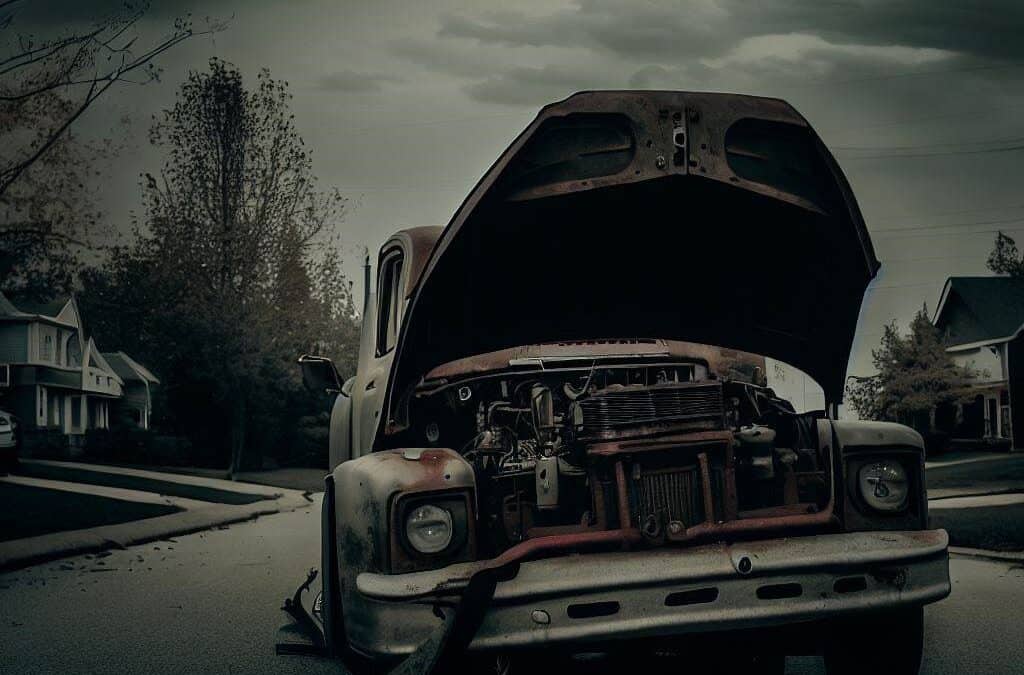Cushioning Life’s Blows: The Essential Guide to Building Your Emergency Fund
We’ve all been there: a sudden car repair, an unexpected medical bill, or even that dreaded pink slip at work. These unplanned events can feel like a tsunami crashing into our well-laid financial plans. But what if there was a shield, a buffer, to soften these blows?
Enter the unsung hero of financial planning: the emergency fund. This isn’t just another buzzword from the finance world; it’s the secret weapon that stands between you and potential financial pitfalls. Ready to discover its magic and why everyone can’t stop talking about it? Buckle up; we’re diving deep!
Why is an Emergency Fund Your Financial Lifesaver?
Financial surprises are lurking around every corner. They always seem to cost a couple hundred or a couple thousand dollars, and they always seem to hit you at the worst possible times. What’s worse is that they seem unrelenting, never willing to stop piling on when you can’t handle any more financial burden.
An emergency fund is set up to make sure that your finances don’t get the better of you. It is that quick stash of cash waiting to be deployed at a moment’s notice. This isn’t the same stash of cash that you are saving for that house down payment, wedding, or next vacation. This is a separate stash that is solely meant for emergencies.
Tapping into other financial sources or savings during these times will only derail your goals. Can you no longer take that vacation that you’ve been planning because you had to replace the air conditioner in your house? That hurts.
That is if you are even lucky enough to have other savings to tap into. Most people don’t have the kind of savings lying around that can be easily shifted to cover the financial turbulence they are experiencing.
This is the easiest way to get yourself into debt. You will let these burdens hit you without any savings, which will cause you to take out loans or put something on a credit card. You may think that you can easily pay off a small loan or knock down your credit card debt. You have good intentions, but then another emergency hits you and you must deploy more credit. This is a never-ending battle that is incredibly easy to fall behind on. It only takes one or two big emergencies to really put you underwater on debt.
By establishing an emergency fund, you protect your present and future self. Think of how stress-free you will be knowing you have the cash available to fix an emergency right now. Future you will also thank you for not robbing them of their retirement. Retirement is a balance between you in the present moment and you in the future moment. One of them must make a sacrifice to benefit the other.
Don’t let an unforeseen emergency be that sacrifice for your retirement.
How Much Do You Really Need in that Rainy Day Fund?
The biggest emergency you are most likely to face is losing your job. Now, you can no longer cover any of your normal bills, and you could find yourself deep in debt by the time you get your new job. When thinking about how much you should keep in your emergency fund, this is the emergency that you should prepare for.
When you lose your job, there will be some bills that still need to be paid and some bills that you can get rid of. This is the difference between discretionary spending and non-discretionary spending. Non-discretionary spending are all the bills you must pay. Your mortgage, utilities, car note, and some food bills count as non-discretionary expenses. Discretionary expenses are the ones that you can get rid of when times get tough. Your Netflix subscription, gym membership, and eating out at fancy restaurants all count as discretionary expenses.
The first thing you need to do is look at your monthly expenses and decide which ones are discretionary and which are non-discretionary. Total up all of your non-discretionary expenses. These are the expenses we will need to replace with our emergency fund.
If you are single or have only one income in the household, you need to cover a minimum of six months of non-discretionary expenses. This will give you enough time to find a new job and still be able to live your life.
If you are married or have two household incomes, then you need to cover a minimum of three months of non-discretionary expenses. If one person loses their job in the house, the other person will still have an income. That income may not be enough to cover all of the expenses, but it will help.
Making Your Money Work…Safely
Having a lot of cash sitting on hand can be a real drag on your overall portfolio. Cash usually establishes a negative return due to inflation. Unfortunately, having your emergency fund in cash is vital. Emergency funds need to be liquid and easily accessible. Think of liquidity as how fast you can turn your savings into spendable cash. There is no asset quicker than cash. If you hold an investment, you will have to sell that investment, and possibly wait for that investment to settle. A house would be an illiquid asset. It takes a lot of time to sell a house and turn it into cash.
Your emergency fund needs to stay in cash. You don’t even want to tie it up with a CD or short-term bond. Trying to make a large return on your emergency fund is not the number one priority. By keeping it in cash, you can easily deploy it at a moment’s notice.
The best way to “invest” your emergency fund is by placing it in a high-yield savings account. The Goldman Sachs Marcus and Ally Savings Accounts are some of the best available rates and accounts. Don’t pick a high-yield savings account that you cannot quickly access and move the money. If it takes a few days to get money out of the account, it is no longer liquid. Make sure the savings account you do have is FDIC insured. If they go out of business, you will still be able to get your money back. A lot of brokerages will release high-yield savings accounts, but they will not be insured.
Debt or Savings? Navigating the Tightrope
Is it better to pay off your current debt or establish an emergency fund? That is a tough question because debt usually comes with high interest rates which increases the debt, but not having an emergency fund can cause you to get into more debt by not being able to cover the next emergency. With little cash to use, you must decide where to use it.
The answer is going to be somewhere in the middle. You need to both pay off your debt and establish an emergency fund. When you are in this situation, look to make minimum payments toward debt while building up your emergency fund. For your emergency fund, aim for a goal of $1,000. This probably won’t be enough to cover your non-discretionary expenses for 3-6 months, but it will help keep you out of debt from smaller emergencies. Once you have your emergency fund established, begin paying down your debt. Once you have your debt paid off, put that extra money into your emergency fund. This system will help keep you in front of your finances and not playing catch-up.
Step-by-Step Roadmap to Your Emergency Fund
Ready to put that hard-earned cash to work and sleep soundly at night? Let’s get you started on building that cushion for life’s curveballs. Here’s a step-by-step guide to start your emergency fund:
- Assess Your Expenses:
First off, know what you’re dealing with. Grab a coffee, settle down, and make a list of all your monthly expenses. Yep, even that sneaky little online subscription you forgot about.
- Set a Target:
Aim high, but be realistic. Remember our chat about covering 3-6 months of non-discretionary expenses? Start there. If that feels daunting, begin with a mini-goal. Maybe $500? Or even $1000? Little by little, you’ll get there.
- Open a Separate Savings Account:
This isn’t your vacation or shoe fund. This is your ‘Oh-no-the-roof-is-leaking’ fund. Keep it separate to resist the temptation to dip into it. Plus, it feels super grown-up and organized.
- Automate Your Savings:
Let’s make it easy-peasy. Set up an automatic transfer from your main account to your emergency fund. It could be right after payday. $20, $50, or $100, whatever feels right. Watch it grow without lifting a finger!
- Revisit and Adjust:
Things change. Maybe you got a raise (hooray!) or added a new monthly expense. Every few months, take a moment to reevaluate and adjust your savings if needed.
- Avoid Temptations:
Remember: This isn’t ‘splurge-on-a-new-outfit’ money. Before using any of it, ask yourself, “Is this a real emergency or just a passing want?”
- Celebrate Milestones:
Hit your first $500? Or made it to a 3-months worth milestone? Pat yourself on the back! Celebrate – but, you know, maybe not by spending too much of it.
- Stay Informed:
The financial world is ever-evolving. Every once in a while, check if there are better high-yield savings accounts or new saving strategies. A well-informed saver is a powerful saver!
Starting an emergency fund might feel like a mountain now, but with each step, it gets easier. Remember, every penny counts, and the peace of mind you’ll gain is priceless.
Conclusion
In our ever-evolving world, changes come at us fast and without warning. From health emergencies to abrupt economic downturns, life’s unpredictability is its only constant. Amidst this sea of uncertainties, your emergency fund stands as a beacon, a lighthouse guiding you away from potential financial storms.
Having an emergency fund isn’t just about stashing away cash; it’s a declaration that you’re proactive about your future. Every dime you set aside is a step towards peace of mind and a cushion against life’s surprises.
Start today! Even if it’s just setting aside the cost of that morning latte or opening a dedicated savings account online. Small steps lead to big leaps. Because remember, it’s not about if the rainy day comes, but when. And you? You’ll be ready!
Glossary
Emergency Fund: A savings account set aside to cover large, unexpected expenses, such as medical emergencies or job loss. Its primary purpose is to improve financial security by creating a safety net.
Liquidity: The measure of how quickly and easily an asset can be converted into cash. Highly liquid assets can be sold or accessed almost immediately, such as funds in a checking account. Illiquid assets take longer to sell and access, like real estate.
Non-Discretionary Spending: Necessary and unavoidable expenses. This includes items like mortgage or rent, utility bills, insurance, and essential food costs.
Discretionary Spending: Optional expenses that can be adjusted based on one’s financial situation. Examples include entertainment, dining out, vacations, and luxury items.
High-Yield Savings Account: A type of savings account that offers a higher interest rate than a standard savings account. The ‘high-yield’ aspect means that the account holder will earn more on their deposited money over time.
FDIC Insured: Refers to accounts insured by the Federal Deposit Insurance Corporation, a U.S. government agency. It means that even if a bank or financial institution fails, depositors will still be able to recover their money, up to the insured limit.
CD (Certificate of Deposit): A fixed-term deposit offered by banks, credit unions, and other financial institutions. It typically offers a higher interest rate than a regular savings account but requires the depositor to leave the money untouched for a set period.

